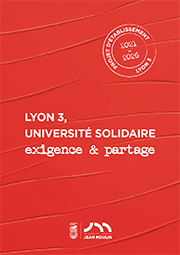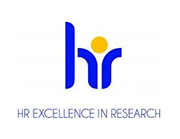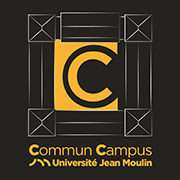AccueilRechercheLes productions scientifiquesThèsesThèses soutenuesThèses soutenues - 2006-2020Thèses soutenues - 2010
-
Partager cette page
- Recherche,
VAVRIL Rudy
Rêve lucide et pensée chinoise, étude de méthodes onithérapeutiques
Thèse en Etudes de l'Asie et ses diasporas Soutenue le 7 juillet 2010
En Grèce et en Chine antiques, l'onéirocritie ou prédiction par les rêves, était utilisée, entre autres, pour établir des diagnostics sur l'état de santé. Les médecines respectives à ces deux ensembles tenaient ainsi compte à l'origine de l'imagerie onirique pour mettre en évidence tel ou tel symptôme. Le Classique de la médecine traditionnelle chinoise, le Huangdi Neijing ou Livre de l'Empereur Jaune, expose par exemple quelques assertions sur cette expression pathologique au sein du rêve.
Par ailleurs, les recherches récentes sur la lucidité onirique semblent démontrer que la maîtrise partielle du rêve et le travail que l'on peut effectuer autour des rêves influeraient positivement sur l'état psychologique voire sur l'état de santé, participant au bon rétablissement d'une personne convalescente ou hospitalisée des suites d'un accident.
Certaines traditions chinoises, le taoïsme et l'alchimie intérieure nés en Chine ainsi que le yoga tibétain des rêves et du sommeil importés d'Inde ont déjà démontré le pouvoir sublimant du rêve et ses capacités de transfiguration de l'Etre.
Notre thèse vise ainsi à synthétiser ces différentes approches antiques et modernes, chinoises et occidentales, concernant le diagnostic et la thérapie par le rêve, ceci afin d'exposer ce qui pourrait constituer les bases d'une « onirothérapie ». Les bases de cette onirothérapie se résument en la prise en compte de l'imagerie onirique fondée sur les cinq éléments et leurs correspondances chromatiques, émotionnelles, etc. Or, si cette imagerie - reflet de l'énergétique - se révèle déjà tout à fait pertinente dans l'autodiagnostic, la transformation de cette imagerie pourrait encore constituer un moyen de rétablir l'équilibre énergétique.
S'il est évident que l'onirothérapie ne peut s'ériger en tant que thérapie autonome ou être considérée comme médecine à part entière, elle pourrait en revanche se révéler très utile en tant que thérapie complémentaire et préventive. Le rêve lucide pouvant ainsi être utilisé pour se prémunir de maladies bénignes et participer à la guérison.
Mots clés : rêve, lucidité, thérapie, medecine chinoise, yoga, alchimie, trigramme, élément
In Greece and China antique, the onirocrity or art of prediction by dreams, was among other things used to establish diagnoses on state of health. So, at the origin, respective medicines in these two groups took into account of dream-imagery to bring to light such or such symptom. For example, the Classic of Traditional Chinese Medicine, Huangdi Neijing or Pound of the Yellow Emperor, expose some propositions on this pathological expression within the dream.
Moreover, the recent researches on dream-lucidity seem to show that the partial workmanship of the dream and the action which can be led around the dream or within the dream would have an influence positively on the psychological state or even on the state of health, participating in the good re-establishment of a person convalescent or hospitalized by the suites of an accident.
Certain Chinese traditions, Taoism and internal alchemy born in China as well as the Tibetan yoga of dream and sleep imported from India have already shown the sublimating power of the dream and its capacities of transfiguration of the being.
Our thesis aims to synthesize these various ancient and modern, Chinese and western approaches, concerning diagnosis and therapy by the dream, in order to expose what could constitute the foundations of "Onirotherapy". The bases of this onirotherapy comes down in the consideration of the imagery based on the five elements and their chromatic, emotional correspondences, etc. If this dream-imagery - reflection of the energetics - is already wholly appropriate in auto diagnosis, transformation of this imagery could again constitute a means to restore energy equilibrium.
If it is evident that the onirotherapy cannot set up itself as autonomous therapy or be considered as medicine in full measure, it could turn out on the other hand to be very useful as supplementary and precautionary therapy. In that way, lucid dream can be used to protect ourselves of minor diseases and to participate in healing. key words : Alchemy, Buddhism, Chakra, Colors, Dream, Elements (five), Emotions, Kabbale, Lucidity (Lucid Dream), Onirocrity, Psychology, Sufism, Taoism, Therapy, Tibetan Yoga, Traditional Chinese Medicine Directeur de thèse : Grégory LEE Membres du jury : Roger GREATREX, Professeur, Université de Lund - Sued Nancy MIDOL, Professeur, Université de Nice Eric MARIE, Docteur en médecine chinoise, Faculté de Médecine de Montpellier Grégory LEE, Professeur, Université Jean Moulin Lyon 3 Mention : Très honorable avec les félicitations du jury Equipe d'accueil : IETT



